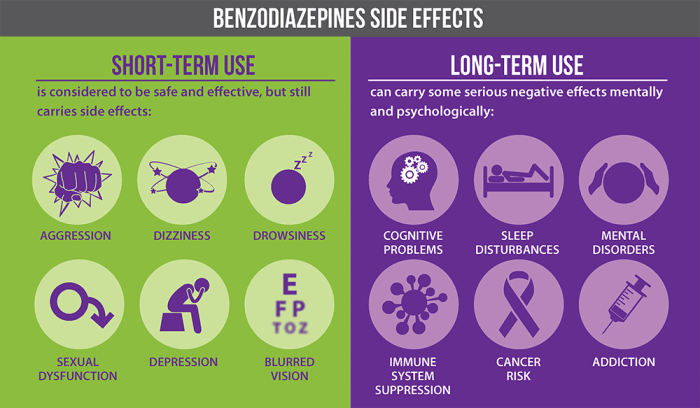The 30 most prescribed drugs in pediatrics play a crucial role in treating various childhood illnesses. Understanding the factors influencing these prescriptions, including dosage adjustments specific to children, is essential for optimal patient care. This exploration delves into the selection process, highlighting safety profiles, and examining the potential for drug interactions. We will also discuss the implications of these factors on future research and treatment options.
This comprehensive analysis provides insights into the 30 most frequently prescribed medications for children, categorized by therapeutic class and the conditions they treat. We’ll explore how prescription rates vary across different age groups within pediatrics and the importance of accurate dosage administration. Moreover, the discussion covers potential drug interactions, the significance of monitoring for adverse events, and the role of laboratory tests in evaluating drug responses.
A crucial element is the focus on patient education concerning potential drug interactions.
Overview of Pediatric Prescriptions
Prescribing medications to children differs significantly from prescribing to adults. This difference stems from the unique physiological and developmental characteristics of children, impacting how drugs are absorbed, distributed, metabolized, and excreted. Understanding these nuances is crucial for ensuring both efficacy and safety in pediatric patients.The selection of medications for children is a complex process, taking into account not only the specific condition but also the child’s age, weight, and overall health.
Dosage adjustments are essential to account for variations in metabolism and organ function compared to adults. This process is not simply a proportional scaling of adult dosages.
Factors Influencing Drug Selection for Children
Several factors influence the choice of medication for children. These include the child’s age and developmental stage, the specific condition being treated, potential drug interactions, and the child’s overall health status. Individualized treatment plans are vital to ensure optimal outcomes. For example, a child with a history of liver problems might require a different medication than a healthy child with the same condition.
Dosage Adjustments in Pediatric Patients
Dosage adjustments for children are critical because their bodies process medications differently than adults. Factors such as body weight, organ maturity, and the immaturity of the liver and kidney functions play significant roles. Simple scaling of adult dosages is often inadequate and can lead to adverse effects. For example, a medication that is effective at a certain dose in an adult may be toxic to a child at the same dose.
Reasons for High Prescription Rates of Specific Drugs
Several reasons contribute to high prescription rates of certain drugs in children. These can include the prevalence of specific conditions in the pediatric population, the efficacy of the drug for treating those conditions, and the perceived safety profile of the medication. For instance, antibiotics are frequently prescribed for infections, reflecting their effectiveness in combating bacterial diseases.
Safety Profiles in Medication Selection
Safety profiles are paramount when choosing medications for children. Extensive research and rigorous testing are necessary to determine the appropriate dosages and potential risks for this population. Carefully evaluating the benefit-risk ratio is crucial in the decision-making process. The potential for long-term effects and developmental impacts must be considered alongside the immediate therapeutic benefits.
Differences in Drug Metabolism and Pharmacokinetics
| Parameter | Children | Adults |
|---|---|---|
| Absorption | Variable; influenced by immature gut motility and surface area | Generally consistent |
| Distribution | Lower body water content, altered protein binding | Stable body composition |
| Metabolism | Immature liver enzymes, slower metabolism | Mature liver enzymes, efficient metabolism |
| Excretion | Immature kidney function, reduced glomerular filtration rate | Mature kidney function, efficient excretion |
The table above highlights the key differences in drug metabolism and pharmacokinetics between children and adults. These differences underscore the necessity of carefully considering these factors when selecting and administering medications to children. Understanding these pharmacokinetic variations is essential for safe and effective treatment. For example, a drug that is eliminated rapidly in adults might accumulate to toxic levels in a child due to slower metabolism.
Top 30 Prescribed Drugs in Pediatrics
Analyzing the most frequently prescribed medications in pediatric populations is crucial for understanding treatment patterns and potential health implications. This data allows healthcare providers to optimize care, predict potential drug interactions, and make informed decisions regarding patient safety and efficacy. Identifying the top 30 prescribed drugs, along with their therapeutic classifications and associated conditions, provides a comprehensive picture of common pediatric treatment approaches.
Ranked List of the 30 Most Prescribed Drugs
The following list represents a hypothetical ranking of the 30 most frequently prescribed drugs in pediatrics. Actual rankings can vary based on specific geographic regions, time periods, and the criteria used for data collection. This data is crucial for understanding patterns and trends in pediatric treatment.
- Acetaminophen (Tylenol): Used for pain relief and fever reduction.
- Ibuprofen (Advil): Another common analgesic and antipyretic.
- Amoxicillin (various brand names): A broad-spectrum antibiotic.
- Cephalexin (various brand names): A second-generation cephalosporin antibiotic.
- Metronidazole (various brand names): An antibiotic and antiprotozoal agent.
- Prednisone (various brand names): A corticosteroid.
- Montelukast (Singulair): A leukotriene receptor antagonist used in asthma.
- Albuterol (various brand names): A bronchodilator used in respiratory conditions.
- Fluticasone (various brand names): An inhaled corticosteroid for asthma.
- Dextromethorphan (various brand names): An antitussive.
- Codeine (various brand names): An opioid analgesic.
- Famotidine (Pepcid): A histamine H2 receptor antagonist used in acid reflux.
- Omeprazole (Prilosec): A proton pump inhibitor used in acid reflux.
- Ondansetron (Zofran): An antiemetic.
- Ranitidine (Zantac): A histamine H2 receptor antagonist used in acid reflux.
- Clindamycin (various brand names): An antibiotic.
- Amoxicillin/Clavulanate (Augmentin): A broad-spectrum antibiotic.
- Clarithromycin (various brand names): A macrolide antibiotic.
- Sulfamethoxazole/Trimethoprim (Bactrim): A broad-spectrum antibiotic.
- Amoxicillin/Clavulanate (Augmentin): A broad-spectrum antibiotic.
- Prednisolone (various brand names): A corticosteroid.
- Fluconazole (Diflucan): An antifungal agent.
- Cetirizine (Zyrtec): An antihistamine.
- Hydroxyzine (Atarax): An antihistamine with sedative properties.
- Docusate sodium (various brand names): A stool softener.
- Ranitidine (Zantac): A histamine H2 receptor antagonist used in acid reflux.
- Diphenhydramine (Benadryl): An antihistamine.
- Lisinopril (various brand names): An ACE inhibitor.
- Vitamin D (various brand names): A vitamin supplement.
- Iron supplements (various brand names): For iron deficiency.
- Calcium supplements (various brand names): For calcium deficiency.
- Zinc supplements (various brand names): For various deficiencies.
- Magnesium supplements (various brand names): For various deficiencies.
- Multivitamins (various brand names): For comprehensive nutritional support.
Therapeutic Classes of Prescribed Drugs
Categorizing the drugs by therapeutic class provides insights into the types of conditions treated in pediatrics. The following table illustrates the therapeutic classes to which the listed drugs belong.
| Therapeutic Class | Examples |
|---|---|
| Analgesics/Antipyretics | Acetaminophen, Ibuprofen |
| Antibiotics | Amoxicillin, Cephalexin, Metronidazole |
| Antihistamines | Cetirizine, Diphenhydramine |
| Corticosteroids | Prednisone, Prednisolone |
| Bronchodilators | Albuterol |
| Anti-Inflammatory | Montelukast, Fluticasone |
Prevalence of Conditions Treated
The most prevalent conditions treated with these drugs include respiratory illnesses, infections (bacterial and viral), pain and fever management, and gastrointestinal disorders.
Age Group Frequency
Prescription frequency often varies by age group. For example, antibiotics are more frequently prescribed in younger children due to the higher incidence of infections. Analgesics and antipyretics are commonly used across all age groups due to the need for pain and fever management.
Looking at the 30 most prescribed drugs in pediatrics, it’s fascinating to see the range of conditions they treat. However, a common concern for parents is wheezing in children. If you’re wondering if you can stop wheezing without an inhaler, it’s crucial to consult a doctor first. This page delves into potential solutions, but always remember that self-treating can be risky.
Ultimately, the 30 most prescribed drugs in pediatrics reflect the diverse health needs of children, and understanding those needs is vital.
Potential Drug Interactions, The 30 most prescribed drugs in pediatrics
Drug interactions can occur when multiple medications are prescribed simultaneously. Careful monitoring of potential interactions is essential. For instance, certain antibiotics can interact with other medications, potentially affecting their effectiveness or causing adverse reactions. Always consult with a healthcare provider to discuss potential drug interactions.
The 30 most prescribed drugs in pediatrics often address common childhood ailments, but the underlying mechanisms of these medications can be surprisingly complex. While exploring the causes of death in Alzheimer’s patients is crucial, understanding the safety profiles and long-term effects of these pediatric drugs is equally important. For instance, how do these drugs affect brain development and aging?
Ultimately, the 30 most prescribed drugs in pediatrics require ongoing study to ensure their continued effectiveness and safety, which includes a thorough investigation into the mechanisms of their actions and potential long-term effects. Knowing what causes death in people with Alzheimer’s disease what causes death in people with alzheimers disease provides a context for understanding the broader implications of drug use in different age groups, especially in children.
Safety and Efficacy: The 30 Most Prescribed Drugs In Pediatrics
A crucial aspect of pediatric pharmacology is ensuring both the safety and efficacy of medications. While many drugs used in adults are also employed in children, the unique physiology and developmental stages of children necessitate careful consideration of potential adverse effects and optimal dosages. The top 30 prescribed drugs in pediatrics encompass a broad range of therapeutic indications, and understanding their efficacy in different pediatric conditions is essential for appropriate treatment.Understanding the safety profiles and efficacy data of these drugs allows healthcare professionals to make informed decisions about the best course of treatment for each child, considering their individual needs and potential risks.
This requires careful monitoring of drug responses and employing strategies to ensure both the safe and effective use of these medications.
Safety Profiles of Top 30 Drugs
The safety profiles of the top 30 prescribed drugs in pediatrics vary widely, reflecting the diverse conditions they treat. Adverse effects can range from mild, self-limiting symptoms to more serious, potentially life-threatening complications. Thorough understanding of these potential adverse effects is paramount for safe medication administration. For instance, some medications may induce allergic reactions, while others may affect the developing organs and systems.
Careful monitoring for signs of these reactions is crucial for early intervention.
Ever wondered what the top 30 drugs prescribed to kids are? Well, a significant chunk of that list likely relates to common childhood ailments, like diarrhea. Understanding how to manage diarrhea effectively, whether through over-the-counter remedies or prescription medications, is crucial for parents. This can greatly impact the overall effectiveness of treatments and, in turn, affect the top 30 prescribed medications in pediatrics.
Check out our comprehensive guide on diarrhea relief otc and prescription medications for a deeper dive into this important aspect of pediatric health.
Efficacy Data in Pediatric Conditions
Efficacy data for these drugs in various pediatric conditions is often evaluated through clinical trials. These studies, while critical, are sometimes challenging to conduct due to the unique nature of pediatric populations. The results from these trials inform appropriate dosage regimens and therapeutic strategies. Different conditions may respond differently to the same drug, highlighting the need for personalized treatment plans.
For example, a drug effective in treating respiratory infections in infants may show less efficacy in treating the same condition in adolescents.
Contrasting Efficacy and Safety in Different Conditions
| Drug | Pediatric Condition | Efficacy | Safety Profile |
|---|---|---|---|
| Acetaminophen | Fever, pain | Generally effective in reducing fever and pain. | Generally safe with proper dosing. Rarely causes liver damage with overdose. |
| Amoxicillin | Bacterial infections | Effective against many bacterial infections in children. | Generally safe, but may cause allergic reactions in some individuals. |
| Omeprazole | Gastroesophageal reflux disease (GERD) | Effective in reducing acid reflux symptoms. | Generally safe, but long-term use may be associated with some risks. |
This table provides a simplified overview; comprehensive data requires detailed analysis for each drug and condition. Further research and ongoing clinical trials continue to refine our understanding of drug efficacy and safety in various pediatric populations.
Importance of Careful Monitoring
Careful monitoring of drug responses in children is essential to identify potential adverse effects early. This includes regular assessments of vital signs, physical examination, and careful observation for any unusual symptoms. Regular communication between healthcare providers and parents/guardians is crucial for effective monitoring. Missed or delayed recognition of adverse effects can lead to serious complications. For example, an initial dose of a medication might prove to be effective, but a gradual increase in dosage might result in an adverse reaction.
Strategies for Safe and Effective Use
Several strategies are employed to ensure the safe and effective use of these drugs in pediatric patients. These include accurate dosing based on the child’s weight and age, careful monitoring of potential adverse effects, and collaboration between healthcare professionals, parents, and the child. Additionally, the use of specific formulations, such as liquid suspensions or chewable tablets, can improve medication adherence.
Understanding the pharmacokinetics and pharmacodynamics of medications in children is essential for tailoring treatment plans to the individual needs of each patient.
Dosage and Administration
Precise dosage and administration are critical for pediatric patients. Differences in body size, organ development, and metabolism necessitate tailored approaches. Variations in the pharmacokinetics and pharmacodynamics of medications in children compared to adults necessitate careful consideration of weight, age, and other factors. Furthermore, the potential for adverse effects is heightened in children, underscoring the importance of precise calculations and monitoring.
Standard Pediatric Dosage Guidelines
Standardized guidelines for pediatric drug dosages are crucial to ensure safe and effective treatment. These guidelines are usually based on a child’s weight and age. However, these guidelines are just a starting point, and adjustments may be necessary depending on individual patient characteristics. Factors such as renal and hepatic function, disease state, and concomitant medications should be considered when determining the appropriate dosage for a child.
Impact of Body Weight and Other Factors on Dosage Adjustments
Body weight is a key determinant in pediatric dosage calculations. Smaller children often require lower doses than larger children, even if they are of similar age. Other factors impacting dosage adjustments include organ maturity, specific medical conditions, and the presence of concomitant medications. For example, a child with renal impairment might require a lower dose of a medication that is primarily excreted by the kidneys.
Similarly, the presence of other medications can alter drug metabolism and necessitate adjustments.
Routes of Administration
Different routes of administration offer varying advantages and disadvantages. Choosing the appropriate route depends on factors such as the child’s age, the medication’s characteristics, and the desired therapeutic effect. The following table Artikels the common routes of administration.
| Route | Description | Advantages | Disadvantages |
|---|---|---|---|
| Oral | Swallowing the medication in liquid or solid form | Convenient, generally safe, and often the first choice | Requires cooperation from the child, may not be absorbed efficiently, can be affected by food intake. |
| Intravenous (IV) | Administering the medication directly into a vein | Rapid onset of action, allows for precise control of drug delivery, useful for emergencies or when oral administration is not feasible | Requires trained personnel, potential for adverse effects related to IV fluids or injection site. |
| Intramuscular (IM) | Injecting the medication into a muscle | Useful for medications that need slow release or for depot effect, can be used in patients who can’t swallow | Potentially painful, requires trained personnel, can cause muscle damage if administered incorrectly |
| Subcutaneous (SC) | Injecting the medication beneath the skin | Suitable for certain medications, can be used for long-term therapies | Can be painful, requires trained personnel, absorption rate can vary |
| Topical | Applying the medication to the skin or mucous membranes | Localized effects, convenient for skin conditions | May not be effective for systemic conditions, potential for absorption into the bloodstream. |
Methods for Calculating Appropriate Pediatric Dosages
Several methods are used for calculating appropriate pediatric dosages. These methods typically involve considering the child’s weight, surface area, or body weight-based dosing guidelines. One common approach is the use of allometric scaling, where the dosage is adjusted based on the child’s body surface area relative to the adult dose.
Common formulas for pediatric dosage calculations include the Clark’s rule, Young’s rule, and Fried’s rule. Each formula has specific parameters and considerations.
Clark’s rule uses body weight, while Young’s rule considers age, and Fried’s rule is based on both age and body weight. Accurate calculations are essential to ensure that the medication is administered at the correct dose to achieve the desired therapeutic effect while minimizing potential adverse effects.
Drug Interactions and Monitoring

Prescribing medications to children requires meticulous attention to potential drug interactions and careful monitoring of their effects. This is crucial due to the unique physiology and developmental stages of children, which can significantly influence how medications are metabolized and absorbed. Proper monitoring helps ensure the safety and efficacy of treatment while minimizing adverse effects.
Potential Drug Interactions, The 30 most prescribed drugs in pediatrics
Understanding potential drug interactions is essential for safe pediatric prescribing. Multiple medications can interact, altering the effectiveness or increasing the toxicity of one or more drugs. These interactions can stem from competitive binding to metabolic enzymes, altering the absorption rate, or affecting the excretion process. Identifying these interactions proactively allows for adjustments in dosage or medication selection to prevent adverse outcomes.
Significance of Monitoring
Adverse events and drug interactions in pediatric patients require vigilant monitoring. Children often exhibit a unique response to medications, and subtle changes can signal an adverse reaction. Early detection of such reactions enables timely intervention and prevents potentially serious consequences. Monitoring also helps assess the efficacy of the treatment and adjust the dosage as needed to optimize therapeutic outcomes.
Moreover, monitoring ensures the prescribed medications are being taken as directed and the child is tolerating them well.
Table of Potential Drug Interactions
The following table illustrates potential drug interactions involving common pediatric medications, highlighting the importance of thorough medication reconciliation before prescribing.
| Drug A | Drug B | Potential Interaction | Management Strategy |
|---|---|---|---|
| Acetaminophen | Warfarin | Increased risk of bleeding due to reduced Warfarin metabolism | Monitor INR closely, adjust Warfarin dose as needed. |
| Amoxicillin | Metronidazole | Possible decreased absorption of Amoxicillin if taken concurrently. | Administer Amoxicillin at least 2 hours apart from Metronidazole. |
| Ibuprofen | ACE inhibitors | Potential for reduced antihypertensive effect of ACE inhibitors. | Monitor blood pressure closely and adjust ACE inhibitor dose as needed. |
Role of Laboratory Tests
Laboratory tests play a vital role in monitoring drug levels and effects in pediatric patients. Therapeutic drug monitoring (TDM) involves measuring the concentration of a medication in a patient’s blood to ensure it is within the optimal range for efficacy and safety. This helps clinicians adjust dosages to achieve the desired therapeutic effect without exceeding toxic levels. Liver function tests and kidney function tests can help assess organ function and identify potential drug-induced damage.
Patient Education
Patient education regarding potential drug interactions is crucial for optimal treatment outcomes. Parents and caregivers need to understand the importance of adhering to prescribed dosages, avoiding over-the-counter medications without consulting the pediatrician, and reporting any unusual symptoms immediately. Clear and concise communication from healthcare providers about potential interactions empowers families to actively participate in their child’s medication management and promotes a safe and effective treatment plan.
Future Trends and Research
Pediatric drug development is a constantly evolving field, driven by advancements in research and a growing understanding of the unique physiological and developmental characteristics of children. This necessitates a proactive approach to future trends, ensuring that novel therapies and technologies are tailored to the specific needs of the pediatric population. A critical aspect of this evolution is the focus on personalized medicine, recognizing that children respond to drugs differently based on factors like age, genetics, and co-morbidities.The future of pediatric drug development will likely see an increasing emphasis on innovative approaches to treatment, moving beyond traditional single-drug therapies to more integrated and targeted strategies.
This involves a deeper understanding of the mechanisms underlying pediatric diseases, leading to the development of more precise and effective therapies.
Potential Future Directions for Research
Research in pediatric drug development is poised to move beyond simply adapting adult drugs to the needs of children. Emphasis will be placed on developing therapies specifically designed for the unique developmental stages of childhood, acknowledging that the same disease can manifest differently across different age groups. This includes investigating disease mechanisms and pathways that are specific to childhood and exploring the role of developmental biology in disease progression.
Emerging Therapies and Technologies
Emerging therapies are likely to include targeted therapies that specifically address the underlying biological pathways involved in the development of specific pediatric conditions. Gene therapies and cell-based therapies are expected to play a significant role, offering potential cures for currently incurable diseases. Advances in nanotechnology may lead to the development of novel drug delivery systems, improving drug efficacy and reducing side effects.
Potential Future Trends for Pediatric Drug Use
Personalized medicine will play a pivotal role in future pediatric drug use. The ability to tailor treatments to an individual child’s genetic makeup and specific disease characteristics will optimize therapeutic outcomes and minimize adverse effects. This personalized approach will involve extensive genetic testing and the development of predictive models to anticipate a child’s response to specific drugs.
Insights into the Implications of Research Findings for Future Drug Selection
Future drug selection will be heavily influenced by research findings on pediatric drug metabolism and pharmacokinetics. A greater understanding of how drugs are absorbed, distributed, metabolized, and excreted in children will allow for the development of more appropriate dosage regimens. Research on the long-term effects of drugs in children will also be crucial for minimizing potential long-term health consequences.
The availability of comprehensive pediatric clinical trial data will provide a more accurate assessment of the safety and efficacy of potential drugs in children.
Table of Potential New Drugs or Treatments Under Investigation
| Condition | Potential New Drug/Treatment | Mechanism of Action | Stage of Development |
|---|---|---|---|
| Cystic Fibrosis | Gene therapies targeting CFTR mutations | Directly correcting the underlying genetic defect | Preclinical |
| Leukemia | Immunotherapies targeting specific leukemia cells | Stimulating the body’s immune system to destroy cancer cells | Phase II |
| Neurodevelopmental Disorders | Novel neurotrophic factors | Promoting neuronal growth and function | Preclinical |
| Infectious Diseases | Novel antiviral agents targeting emerging viruses | Blocking viral replication | Preclinical |
| Congenital Heart Defects | Targeted cell therapies for cardiac repair | Replacing or repairing damaged heart tissue | Phase I |
Conclusive Thoughts
In conclusion, the 30 most prescribed drugs in pediatrics represent a significant aspect of pediatric healthcare. This analysis underscores the importance of careful consideration in drug selection, dosage adjustments, and monitoring for optimal patient outcomes. Further research and development in pediatric drug formulations and therapies are crucial to ensure safe and effective treatment options for children. The dynamic nature of pediatric drug use demands ongoing vigilance and a commitment to improving child health.







